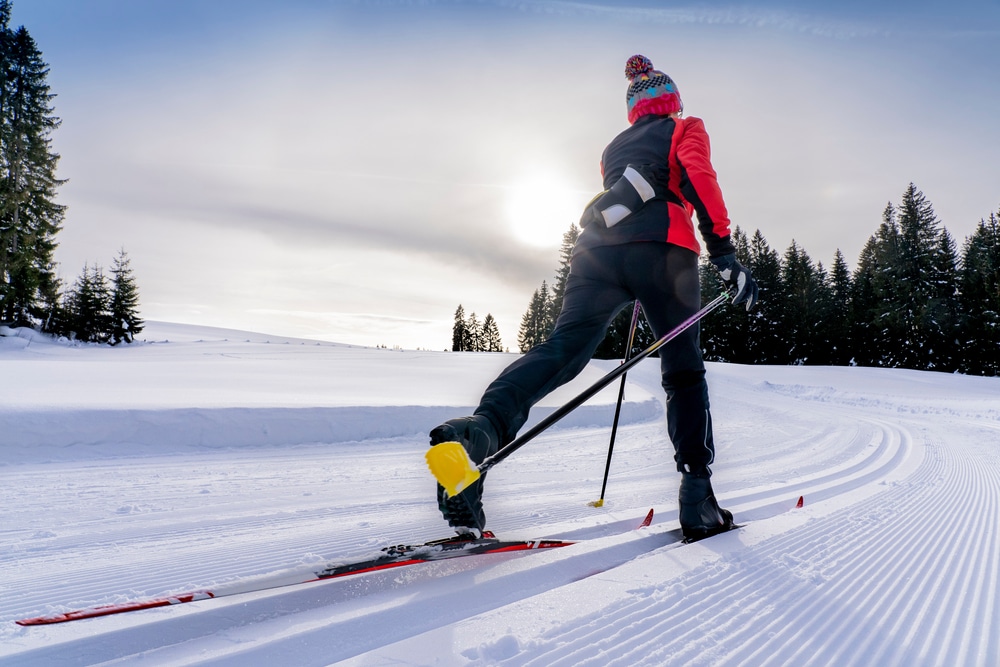Before embarking on your journeys on snow, whether it is ice skiing, ski touring, or skis on the bike, the selection of the right gear is essential for comfort, convenience, efficiency, and enjoyment. Similarly, cross-country ski adventure also requires the right ski sizing guide to explore and enjoy snowy landscapes. It’s essential to have the right equipment, from properly sized cross-country ski length to pole sizing and ski boots. In this article, we will cover each aspect of cross-country ski sizing along with the comprehensive size charts that help you to choose the right ski length and pole size according to your length and weight.
Different Types of Cross-Country Skis
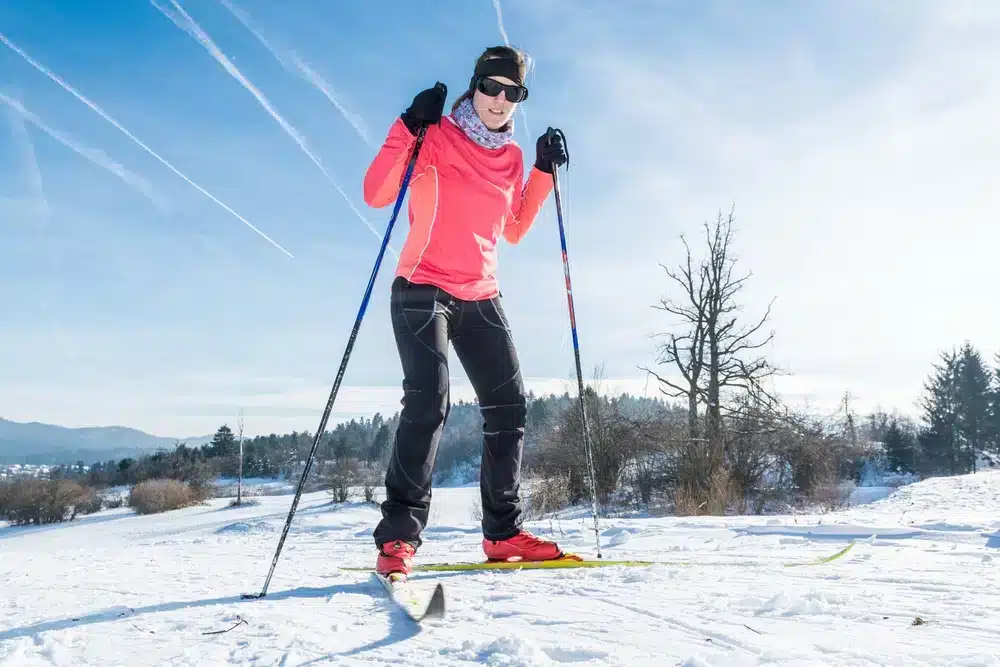
There are two main types of cross-country skiing: classic and skating. Each style requires different instruments and techniques.
Classic Skiing
Classic skiing is the traditional form of cross-country skiing performed on developed tracks. It involves straight-ahead motion, so it is suitable for beginners. Traditional cross-country skis glide over the snow with their tips and tails with a kick zone in the middle for grip when you push down.
Classic Ski Sizing
Classic skis should be longer than your height for optimal glide and efficiency. Adding 20–25 cm to your height is frequently advised for classic ski length. However, weight is the primary determining factor.
- Lightweight Skiers can choose the shorter end of the ski spectrum.
- Heavier skiers should select longer skis for optimal performance.
Skating Skiing
Skating skiing mimics the motion of ice skating, requiring a more This style is both faster and more physically demanding. Skate skis, which are shorter and more powerful than classic skis, provide more stability and speed on the snow.
Skate Ski Sizing
Due to their increased demand for responsiveness and maneuverability, skate skis are usually shorter than classic skis. A common recommendation is to choose skate skis that are 5-10 cm shorter than your height, but weight is still a very important factor.
- Lighter Skiers: Skis closer to the shorter end may be more advantageous.
- Weightier Skiers: For improved support and glide, choose longer skis.
Factors Influencing Ski Sizing
he appropriate length of a ski depends on several parameters, such as weight, height, ability level, and type of skiing. Let’s discuss each of the factors in detail.
Weight and Height
Your weight is the most important element affecting ski length. manufacturers usually provide the size charts to match your weight range with an appropriate ski length, are frequently provided by . Another factor is height, particularly when adjusting the fit.
Skill Level
Shorter skis provide more control and maneuverability, and beginners usually benefit from them. Longer skis may be more suited for advanced skiers who want more speed and glide.
Skiing Type
The size of your skis depends on how you plan to use them. Classic skis are generally longer than skate skis, and backcountry ski selection is dependent upon the snow and terrain.
Ski Length Sizing
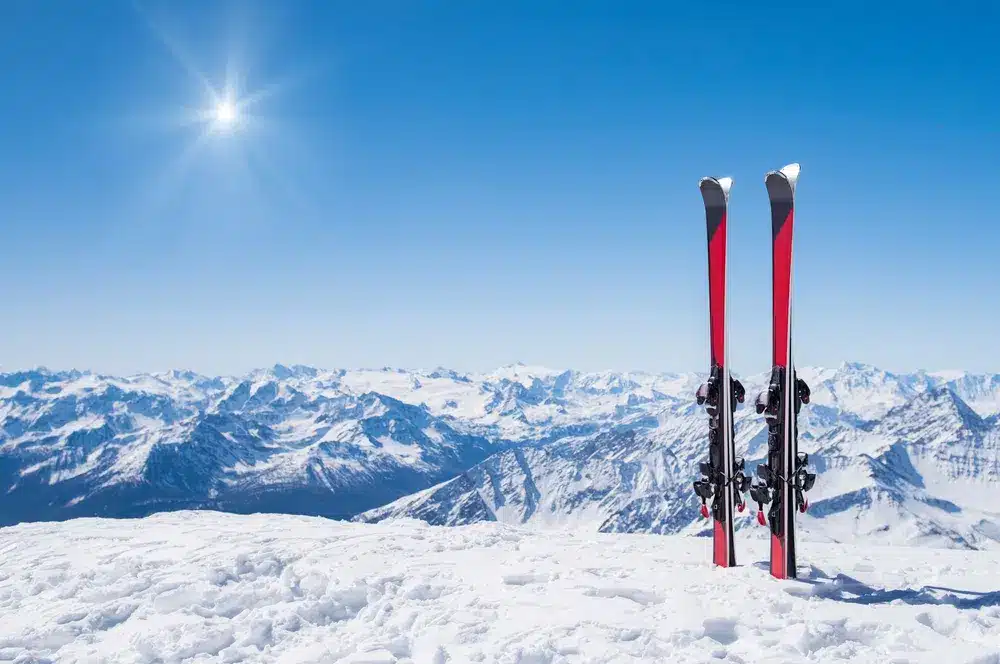
the selection of appropriate ski length is crucial for both types of skiing. the length of the ski has an impact on your performance, glide, and balance during skiing
Classic Ski Length
For classic skiing, the general rule is that longer skis provide better glide but can be harder to control. Hold the ski end up in front of you to determine the proper length for a classic ski. The top needs to extend from your wrist to your head’s peak.
- 5’0″ to 5’3″: 180-190 cm
- 5’4″ to 5’7″: 185-195 cm
- 5’8″ to 5’11”: 190-200 cm
- 6’0″ to 6’3″: 200-210 cm
Skate Ski Length
Skate skis are often shorter than classic skis. The ideal ski length for skating skiing is typically between the chin and the crown of the head.
- 5’0″ to 5’3″: 170-180 cm
- 5’4″ to 5’7″: 175-185 cm
- 5’8″ to 5’11”: 180-190 cm
- 6’0″ to 6’3″: 185-195 cm

Product Details
- Size 99cm
- Color Black/Yellow
- Brand 5th Element
- Material Wood, Metal
- Sport Alpine Skiing
Ski Pole Sizing
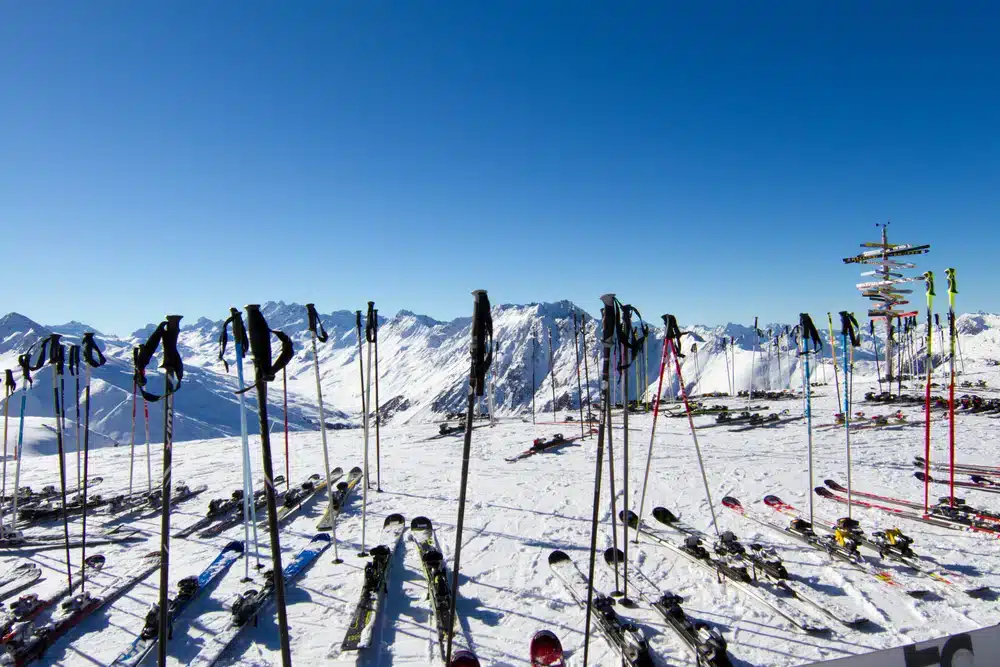
Maintaining balance and perfecting your skiing skills depends on the length of your ski poles.
Classic Ski Pole Length
When standing, the length of the pole for classic skiing should be at the armpit level. This length enables you to push effectively without straining your arms excessively. A simple reference depending on your height is provided here:
- 125–135 cm, or 5’0″ to 5’3″
- 135-145 cm, 5’4″ to 5’7″
- 140-150 cm at 5’8″ to 5’11”
- 145–155 cm, or 6’0″ to 6’3″
Skate Ski Pole Length
For skating skiing, the pole length should be longer, reaching up to your nose or chin. This gives you the leverage you need to hit hard. For quick reference, consider this:
- 5’0″ to 5’3″: 135-145 cm
- 140-150 cm, 5’4″ to 5’7″
- 145–155 cm, 5’8″ to 5’11”
- 150–160 cm, 6’0″ to 6’3″
Product Details
- Brand Atomic
- Material Aluminum
- Color Black
- Shaft Material Aluminum
- Extended Length 110 Centimeters
Boots for Skiing
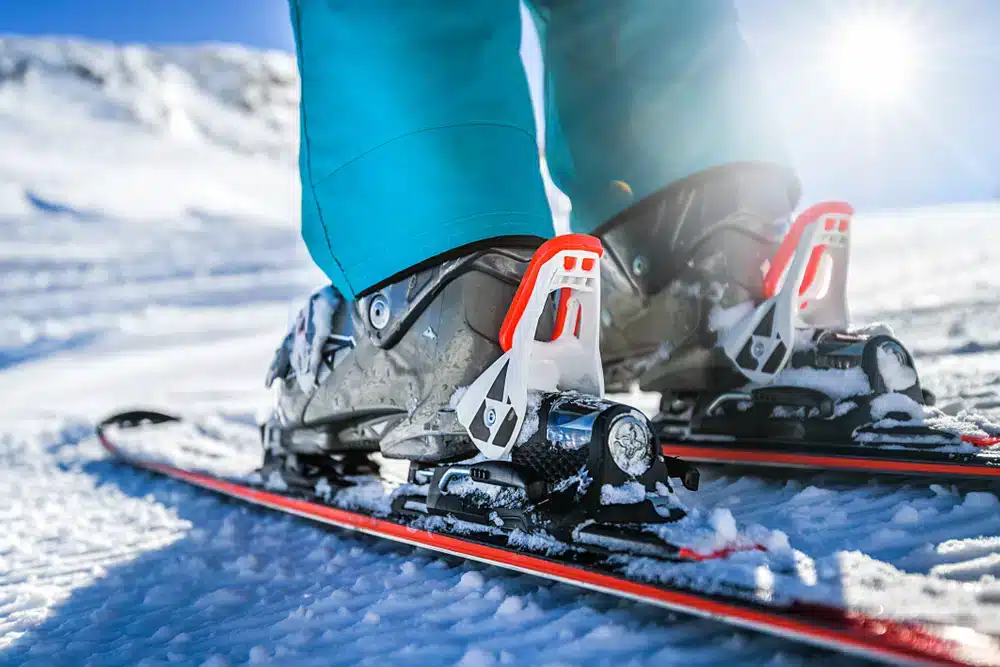
Ski boots are essential for optimal comfort and performance. They keep your skis attached and offer the support essential for various skiing techniques.
Explore the collection of the best ski boots for ultimate comfort and support during skiing adventures.
Classic Ski Boots
Classic ski boots have a flexible sole that promotes natural foot mobility and are intended for forward motion. They offer comfort and ankle support, and their design resembles hiking boots.
Skate Ski Boots
Skate ski boots offer the necessary support for lateral movements because of their stiffer construction and more rigid soles. Like running shoes, these boots provide increased ankle support while adding stability for the dynamic skating motion.
Chart of Boot Sizes
The sizing of your ski boots should generally match your normal shoe size, but it’s important to test them on to make sure they fit snugly without being too tight. European sizing is what manufacturers prefer to use, so if needed, become familiar with conversions.
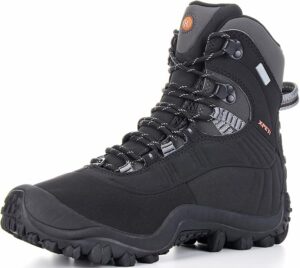
Product Details
- Sole: Ethylene Vinyl Acetate, Rubber
- Outer material: Rubber
- Closure type: Lace-Up
- Water resistance level: Waterproof
- Extended Length 110 Centimeters
Waxable vs. Waxless Skis
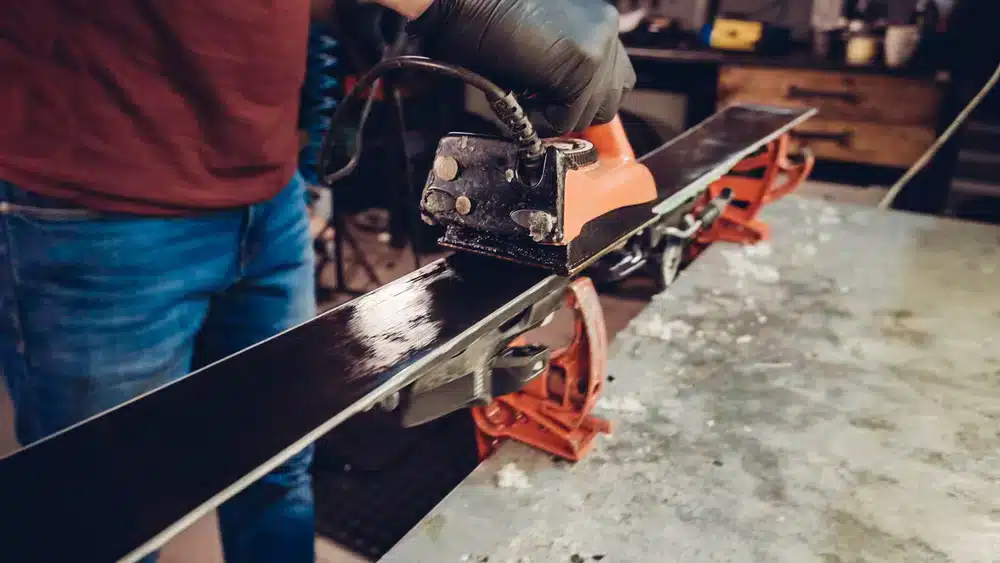
Depending on your skill level and the skiing conditions, you can choose between waxable and waxless classic skis.
Classic Waxable Skis
Waxable classic skis require the application of kick wax in the kick zone to provide grip. This enhances performance in different snow situations and allows for increased customization. Expert skiers prefer them because they may modify the wax according to the snow’s composition and temperature.
Classic Waxless Skis
Wax is unnecessary on waxless classic skis because of the textured pattern or scales in the kick zone. For beginners or those who ski in regular conditions, they are the best option because they are more convenient and easier to maintain.
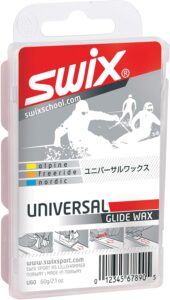
Product Details
- Brand Swix
- Item Form Bar
- Item Weight 2.4 ounces
- Best For: skiing and snowboarding
- Extended Length 110 Centimeters
| Height | Classic Ski Length | Skate Ski Length |
|---|---|---|
| 5’0″ to 5’3″ | 180-190 cm | 170-180 cm |
| 5’4″ to 5’7″ | 185-195 cm | 175-185 cm |
| 5’8″ to 5’11” | 190-200 cm | 180-190 cm |
| 6’0″ to 6’3″ | 200-210 cm | 185-195 cm |
| Height | Classic Pole Length | Skate Pole Length |
|---|---|---|
| 5’0″ to 5’3″ | 125-135 cm | 135-145 cm |
| 5’4″ to 5’7″ | 135-145 cm | 140-150 cm |
| 5’8″ to 5’11” | 140-150 cm | 145-155 cm |
| 6’0″ to 6’3″ | 145-155 cm | 150-160 cm |
Final Tips for Sizing Cross-Country Skis
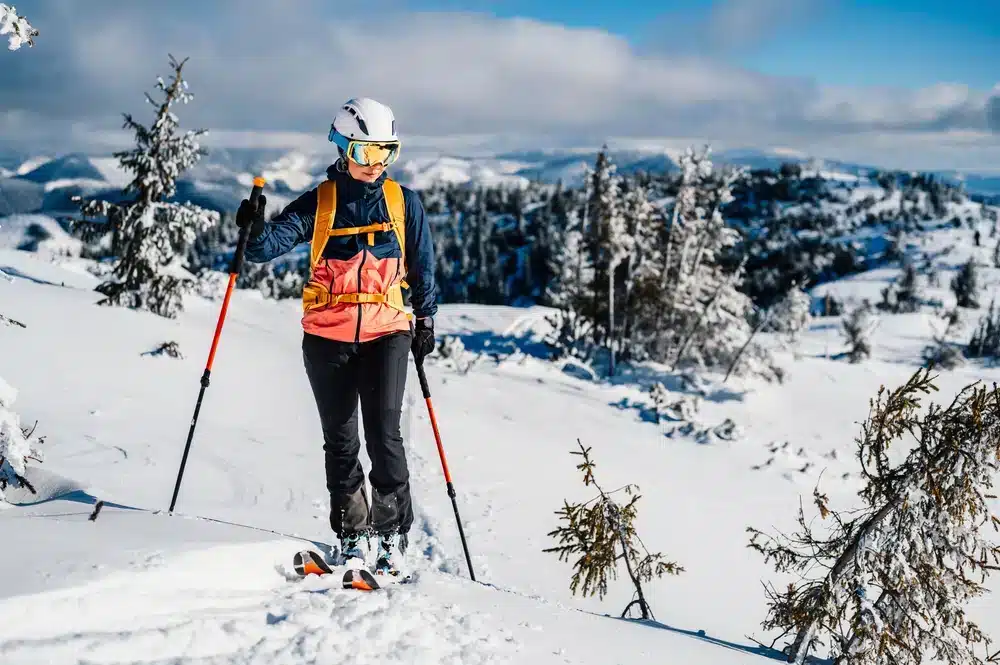
Try Before You Buy
Try on various ski sizes to determine which one fits the best.
Assess Binding Position
Make sure the bindings are correctly positioned for your selected ski length. This is crucial for balance and control.
Conclusion
Finding the perfect fit for your cross-country ski sizing equipment involves understanding your style, body measurements, and preferences. Whether you’re focusing on classic skiing or more dynamic skating skiing, the right equipment enhances your experience and performance. Enjoy the beauty of the snowy trails with the perfect cross-country ski setup, and glide your way to an exciting adventure.

